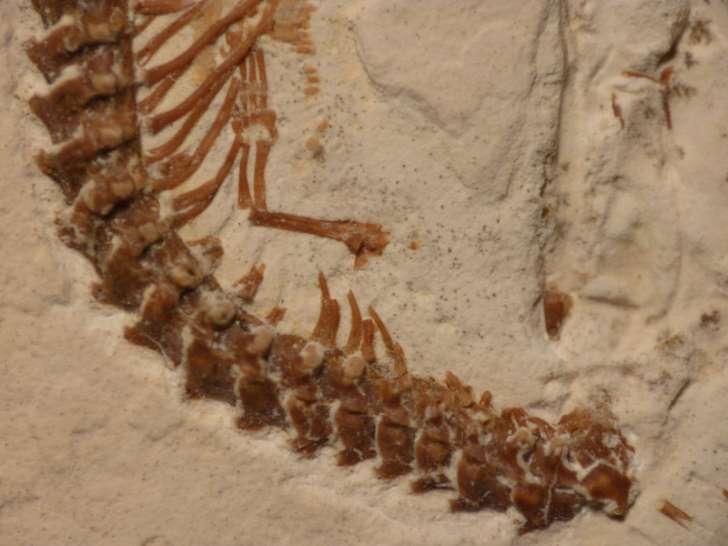July 24, 2015
Scientists named the snake “Tetrapodophis amplectus,” which measured only 20 centimeters from head to toe. However, they noted that it might have grown much larger. The head of the fossilized snake was the size of an adult fingernail, and the smallest tail bone was only a quarter of a millimeter, the team stated.

July 24, 2015
Scientists named the snake “Tetrapodophis amplectus,” which measured only 20 centimeters from head to toe. However, they noted that it might have grown much larger. The head of the fossilized snake was the size of an adult fingernail, and the smallest tail bone was only a quarter of a millimeter, the team stated.

The front legs were about 1 centimeter long and hands were just 5 millimeter in length. Its back legs were longer than the front, and measured more than the hands.
"The hands and feet are very specialized for grasping. So when snakes stopped walking and started slithering, the legs didn't just become useless little vestiges — they started using them for something else. We're not entirely sure what that would be, but they may have been used for grasping prey, or perhaps mates," Longrich said.
Interestingly, scientists also found remains of food and bone in the fossilized snake's guts. They said that the snake's final prey might have been a salamander, hinting that snakes were carnivorous much earlier than believed.
Scientists categorized Tetrapodophis as snake instead of lizard because it had a "lengthened" body, which should not be confused with long tail. They maintained that it was a transitional snake without belly scales, which are commonly seen on modern snakes and crocodiles. The tooth implantation, the direction of the teeth, and the pattern of the teeth and the bones of the lower jaw were similar to those of snakes.
The team also said that the discovery could be a connecting link between snakes and lizards as no other reptile had the features of both.
"The preservation of the little snake is absolutely exquisite. The skeleton is fully articulated. Details of the bones are clearly visible and impressions of soft tissues such as scales and the trachea are preserved," Tischlinger said.
The study was published in the July 23 issue of the journal Science.













































































































